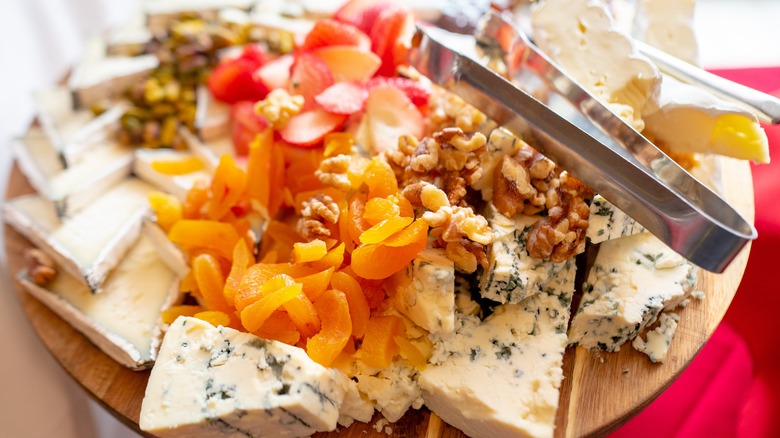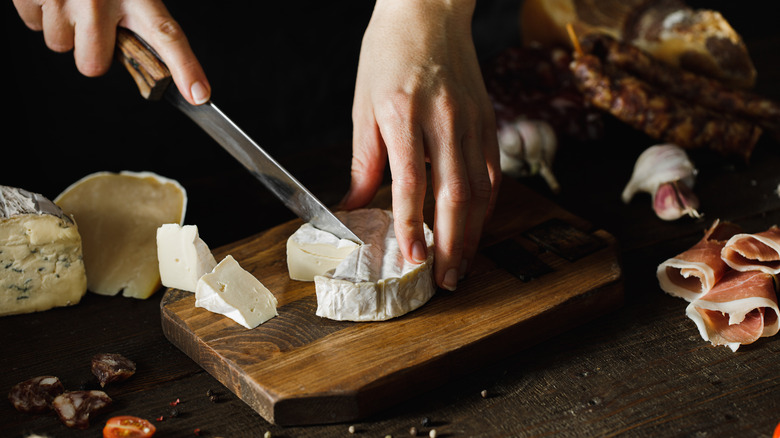The Knife Mistake That Spoils Your Fancy Cheese Board
A charcuterie board of any size will cost you some pretty pennies to assemble, even if none of the cheeses you picked is something fancy like Caciocavallo Podolico. But let's say you just spent up to a hundred bucks to put together a spread of several cheese cuts, each with its own unique flavor profile. You've even made sure to add the perfect accompaniments — crisp crackers, sweet fruits, and maybe even a drizzle of honey or a dash of nuts. But after all the troubles you just went through and all the money spent, your fancy cheese board can still be ruined by one simple mistake: Using the same knife for all the cheeses.
Cutting multiple cheeses with the same knife can lead to cross-contamination as cheese bits from one cut stick to the blade and transfer to another cut. And just as you wouldn't want to mix a bold cabernet with a delicate pinot grigio, you don't want to intermix the flavor of your cheeses, either.
For instance, as you slice through a cut of Gorgonzola, a few crumbs containing its signature bold-tasting earthiness will cling to the knife blade. Then, when you use that same knife to slice into a young Gruyere with its milder, sweeter taste, the Gorgonzola's lingering taste can transfer over, covering up the unique flavors of the Gruyere you want to enjoy. Before you know it, telling one cheese apart from another becomes frustratingly tricky and your cheese board's done for.
The solution: Use multiple knives
The solution is simple, and you've probably already guessed it: Use a separate knife for each type of cheese on your after-dinner cheese board. But having more knives isn't just about preventing flavor mixing. Having a variety of knives designed for different cheese textures will also make it easier to cut, portion, and serve them.
For soft, spreadable cheeses like brie or camembert, go for a knife with a dull blade and a large surface area. These knives help you spread the cheese smoothly over crackers and bread. If you prefer to slice through soft cheeses, choose an open-holed knife to minimize bits of the cheese sticking to the blade. For semi-firm, sliceable cheeses like cheddar, use a cheese slicer to ensure you get clean, even slices that show off the cheese's texture and appearance.
Lastly, for hard, aged varieties like parmesan or aged gouda, opt for a small, pointed sharp knife or one with a double-pointed blade. These knives allow you to break off pieces without compromising the cheese's character!

